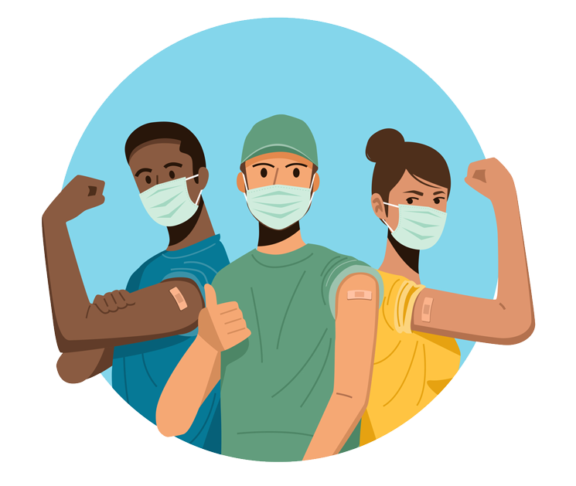
James Anderson
Executive Director, Global Health, IFPMA
We must take pandemic preparedness farther, faster by ensuring a joint response to future outbreaks.
Our efforts against COVID-19 have surfaced critical learnings, including the need to establish a global foundational capability, fit for purpose ahead of the next health emergency.
Key learnings for a better vaccine ecosystem
We have witnessed the importance of solid multistakeholder collaborations to develop pandemic countermeasures. We have also seen the need to build a robust, functional and decentralised vaccine ecosystem to ensure the world is better protected against infectious diseases today and can respond faster to future pandemic outbreaks.
The first COVID-19 vaccine was approved for emergency use only 326 days after the genetic sequence of SARS-CoV-2 was released. This was the fastest vaccine development ever, slashing by a fifth the previous record.
This speed of response has been key to change the impact of COVID. Now, we can prepare to react even quicker to the next pandemic and ensure equitable access to new innovations sooner. With sustained political and industry leadership and collaboration, we could cut this time to a third.
Our collective ability to foster and maintain a sustainable innovation ecosystem will determine the success of this ambitious initiative.
Success ingredients for the 100 Days Mission
Spearheaded by the Coalition for Epidemic Preparedness Innovations (CEPI) and supported by the G7 UK Presidency, the 100 Days Mission aims to develop and deploy high-quality diagnostics, therapeutics and vaccines in just 100 days after a new pandemic threat is identified.
This programme is our best shot at preventing the next emerging pathogen from reaching pandemic proportions, because the faster an effective vaccine is developed, approved and deployed, the faster the next Disease X can be contained and controlled.
For this, the biopharmaceutical industry will build a portfolio of promising candidate vaccines, treatments and technologies against pathogens with epidemic and pandemic potential. These efforts will work best if paired with improved surveillance infrastructure and regulations for the immediate sharing of pathogen data, so that threats are quickly detected and candidate tools swiftly tested.
Equally important, we need to standardise regulatory processes to speed up market access and expand manufacturing capacity so that these tools are deployed faster, fairly and equitably in future health emergencies.
Our collective ability to foster and maintain a sustainable innovation ecosystem will determine the success of this ambitious initiative. Academia, national governments, international organisations, private companies, regulatory officials and manufacturing sectors have roles to play. United for a common goal, rather than working alone, we can go farther and faster.


